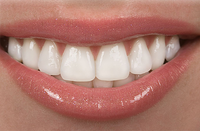A Leading Cincinnati Dentist Explains What Gingivitis Is & How to Prevent it

A condition that afflicts over 50% of American adults, gingivitis is a form of gum disease that most associate with bleeding gums. Even though it is so common and widespread, according to Cincinnati area dentist, Dr. Loftspring of Edward E. Loftspring DDS, this condition can progressively worsen, leading to numerous other dental problems. It is, therefore, important to understand the signs of gingivitis and know how to prevent it.
Here are some answers from the family dentist:
- Signs & Symptoms: The most immediate sign of gingivitis will be that your gums will start bleeding and become inflamed, especially when you’re flossing. Since the condition attacks gums, you may even notice your teeth appearing longer, pockets forming between the tooth and gum, chronic bad breath, and an occasional bad taste in the mouth.
 Causes: Gingivitis is the result of tartar and plaque buildup at the base of teeth and around the gumline, which occurs because of insufficient dental care and cleaning. If untreated, this condition leads to periodontitis, a more severe form of the disease that can result in tooth loss and damage to the jaw bone. The inflammation and bleeding that occurs have also been linked with diabetes and heart problems.
Causes: Gingivitis is the result of tartar and plaque buildup at the base of teeth and around the gumline, which occurs because of insufficient dental care and cleaning. If untreated, this condition leads to periodontitis, a more severe form of the disease that can result in tooth loss and damage to the jaw bone. The inflammation and bleeding that occurs have also been linked with diabetes and heart problems.- Prevention: Solid hygiene and consistent dental cleaning habits are the best ways to prevent gingivitis. This begins with brushing twice daily and flossing every day, practices which can be supported by using antibacterial mouthwash. In addition, regular visits to the dentist for teeth cleanings and evaluations will prevent it from forming or getting worse.
If you are in the Tri-State area, visit this practice’s website to find out more about them. You can also follow these dentists on Facebook, or call the office of Edward E. Loftspring DDS at (513) 721-5924 if you have any questions.
About the Business
BUSINESS
Dentistry
Edward E Loftspring
19 Garfield Place Downtown, Cincinnati, OH 45202
Have a question? Ask the experts!
Send your question

